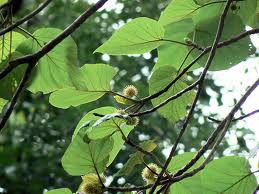| PlantID | 0033 |
| Botanical Name | Haldina cordifolia |
| Common Name | Haldu |
| Classification | | Kingdom: | Plantae | | Subkingdom: | Tracheobionta | | Division: | Magnoliophyta | | Class: | Magnoliopsida | | Subclass: | Asteridae | | Order: | Rubiales | | Family: | Rubiaceae | | Genus: | Haldina | | Species: | cordifolia |
|
| Part used | Bark and leaves. |
| Medicinal Properties | Bark: aphrodisiac, vulnerary, tonic, febrifuge. Leaves: antiseptic. |
| Medicinal Use | Bark: useful in inflammation, biliousness, blood and skin diseases, and fever. Leaves: juice used as wormicidal, paste is used to cure wounds. |
| Chemistry | Trunk and sawdust: Orange-coloured oleoresin. Wood: alpha, beta and gama-cellulose, lignin, hemicellulose A & B. Heartwood: adifoline, cordifoline, 10-deoxyadifoline, 10-deoxycordifoline, benzoic acid, umbelliferone, beta-sitosterol and yellow pigment-adinin. |
| Cultivation | NA |
| Regional Habitat | Commonly found in forests. Distribution: Sirohi, Udaipur, Dungarpur, Jaipur, Bhilwara, Chittorgarh, Swai-Madhopur, Kota, Banswara and Jhalawar districts of Rajasthan.
|
| Description | Deciduous trees, 8-18 m high. Bark: greyish-black, longitudinally fissured. Leaves: stipules 1.0-1.5 x 0.8-1.4 cm, oblong, obovate, sparsely pubescent, obtuse, pinkish-tinged, surround the young buds; petioles 1.2-6.0 cm long; lamina cordate at base, broadly ovate/orbicular, 1.7-16.0 x 1.5-16.6 cm, surfaces glabrous or sparsely pubescent adaxially, lateral-veins 5-8 pairs, prominent abaxially, apex acute or shortly acuminate, margins entire. Flowers: inflorescence 1.5-2.0 cm across, axillary, 1-3 fascicled heads; peduncles 2.5-5.5 cm long; calyx hair, limb short, truncate; corolla - tube slender, sparsely pilose within, lobes ovate-oblong, subacute, recurved; style much exserted. Fruits: capsules obconical, 0.4-0.6 cm long, dawny. Seeds: brown, 6 in each cocci. Flowers appears during August-September and fruits appears during October_March.
|
| Image |  |


